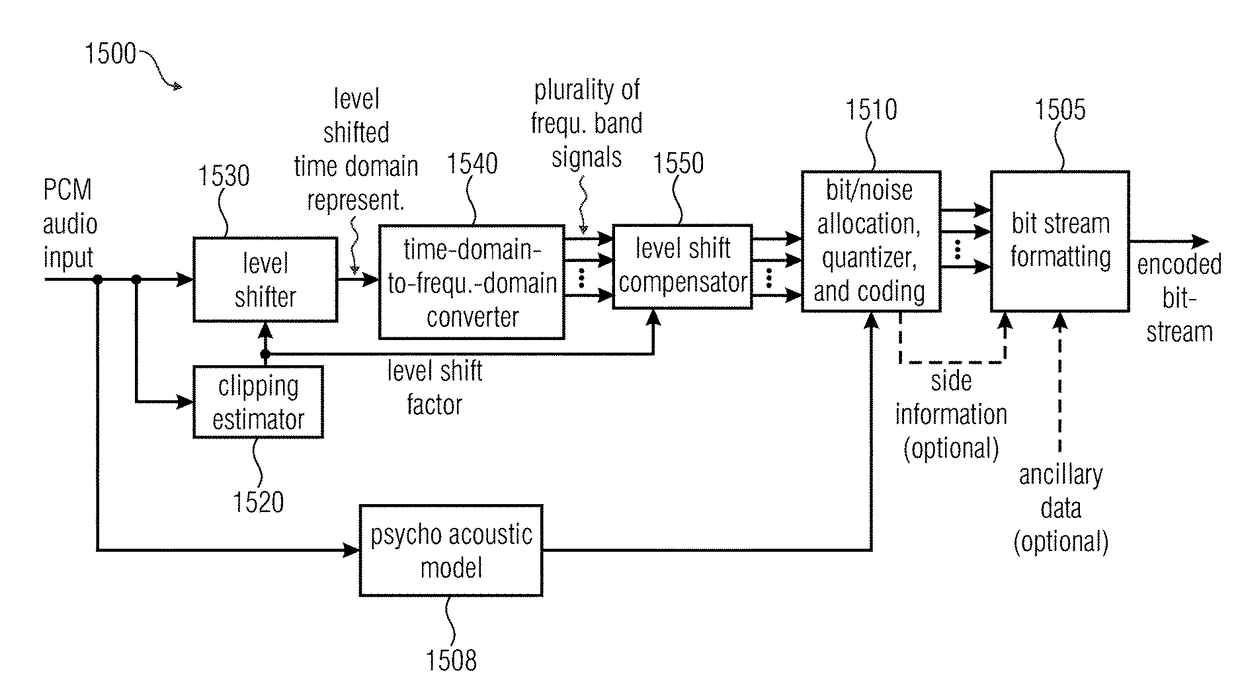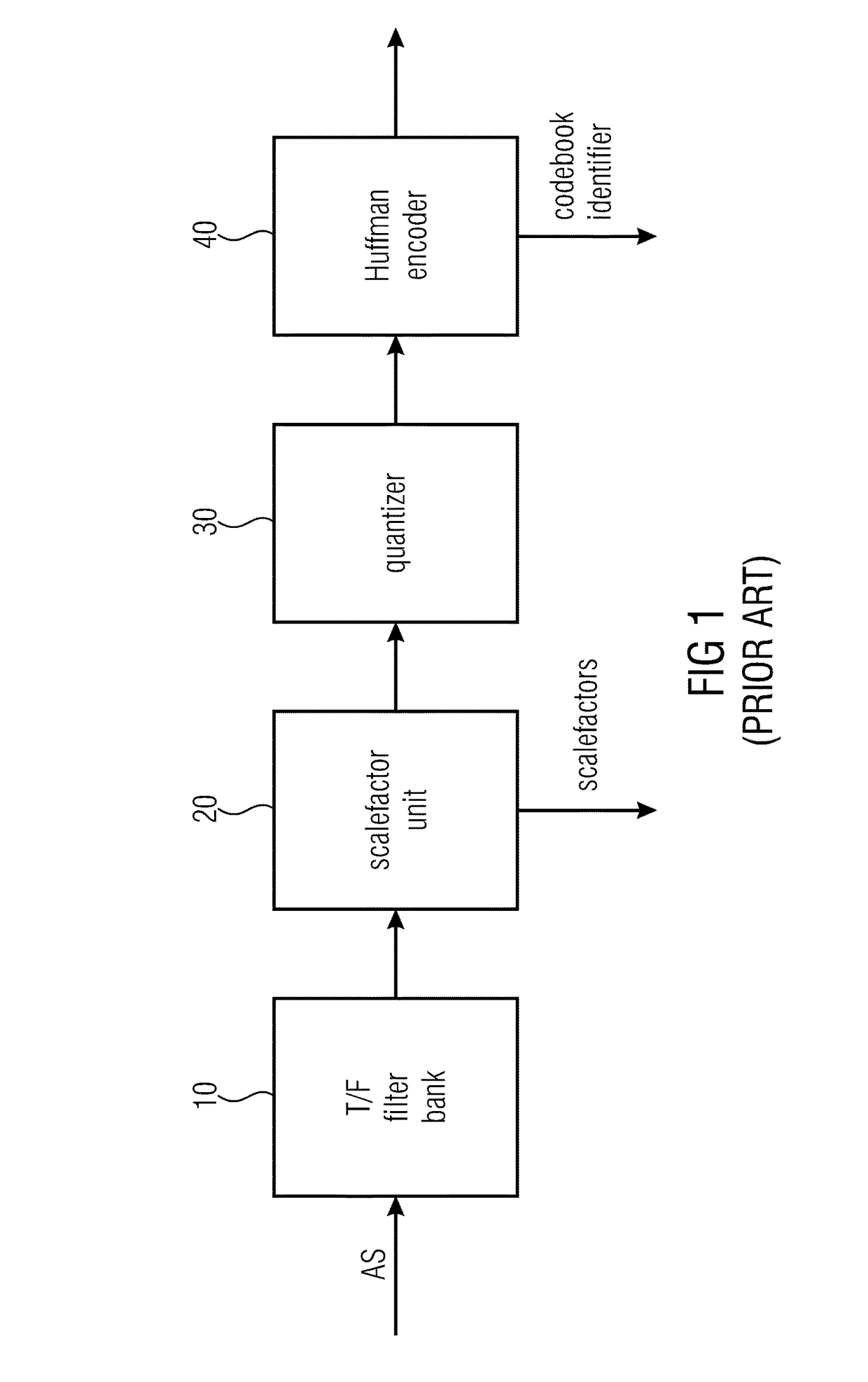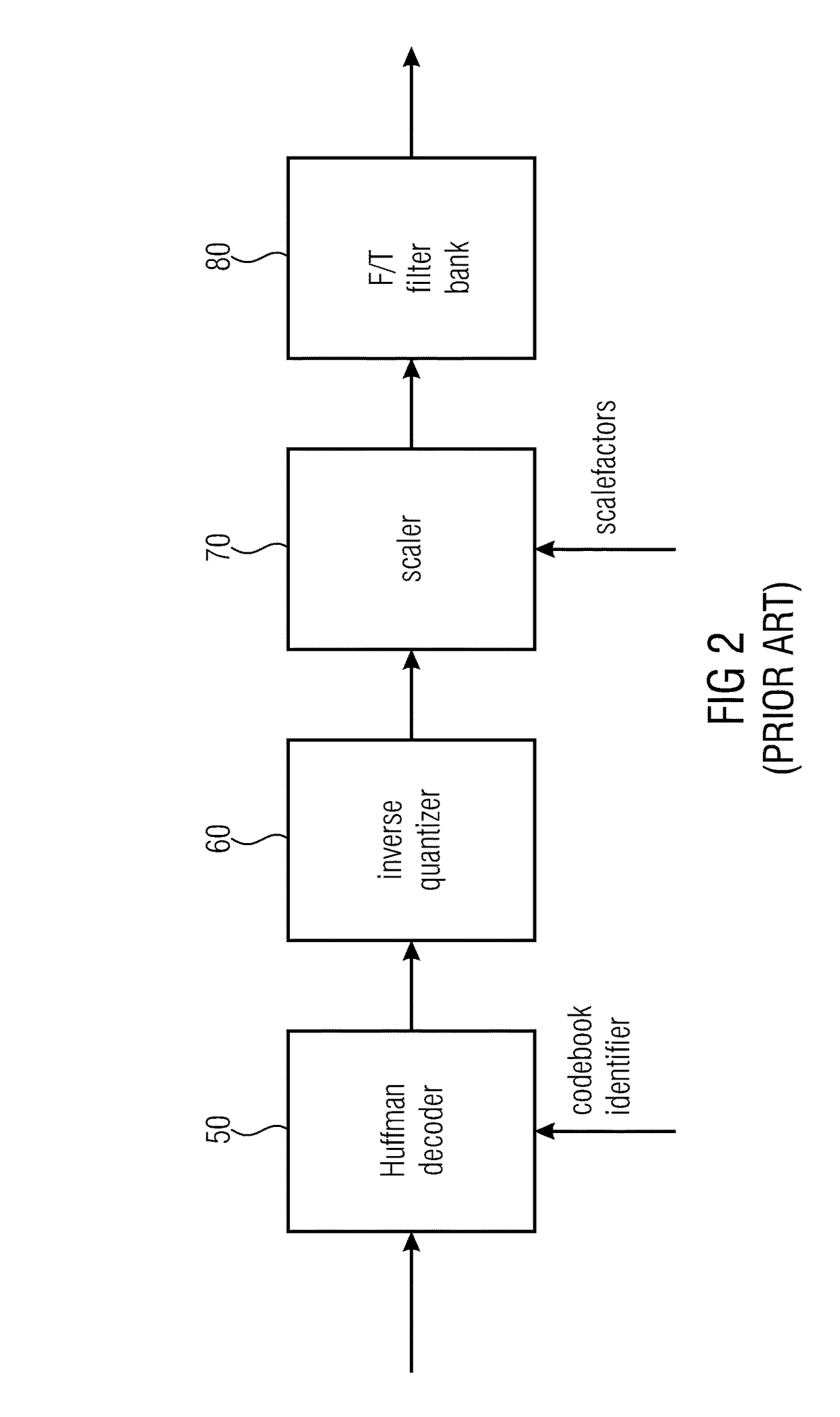Time domain level adjustment for audio signal decoding or encoding
a time domain and audio signal technology, applied in the field of audio signal encoding, decoding, and processing, can solve the problems of small deviations in signal amplitude and phase with respect to original waveform, and signal at the receiver side is only regenerated with correct power, so as to reduce the probability of clipping and the overall loudness level of the audio signal.
- Summary
- Abstract
- Description
- Claims
- Application Information
AI Technical Summary
Benefits of technology
Problems solved by technology
Method used
Image
Examples
Embodiment Construction
[0041]Audio processing has advanced in many ways and it has been subject of many studies, how to efficiently encode and decode an audio data signal. Efficient encoding is, for example, provided by MPEG AAC (MPEG=Moving Pictures Expert Group; AAC=Advanced Audio Coding). Some aspects of MPEG AAC are explained in more detail below, as an introduction to audio encoding and decoding. The description of MPEG AAC is to be understood as an example only, as the described concepts may be applied to other audio encoding and decoding schemes, as well.
[0042]According to MPEG AAC, spectral values of an audio signal are encoded employing scalefactors, quantization and codebooks, in particular Huffman Codebooks.
[0043]Before Huffman encoding is conducted, the encoder groups the plurality of spectral coefficients to be encoded into different sections (the spectral coefficients have been obtained from upstream components, such as a filterbank, a psychoacoustical model, and a quantizer controlled by th...
PUM
 Login to View More
Login to View More Abstract
Description
Claims
Application Information
 Login to View More
Login to View More - R&D
- Intellectual Property
- Life Sciences
- Materials
- Tech Scout
- Unparalleled Data Quality
- Higher Quality Content
- 60% Fewer Hallucinations
Browse by: Latest US Patents, China's latest patents, Technical Efficacy Thesaurus, Application Domain, Technology Topic, Popular Technical Reports.
© 2025 PatSnap. All rights reserved.Legal|Privacy policy|Modern Slavery Act Transparency Statement|Sitemap|About US| Contact US: help@patsnap.com



